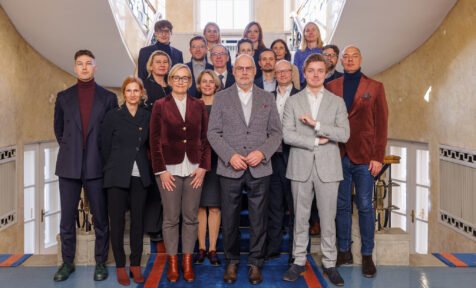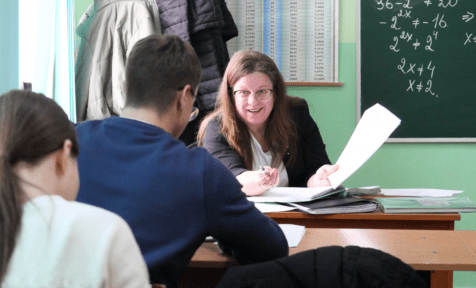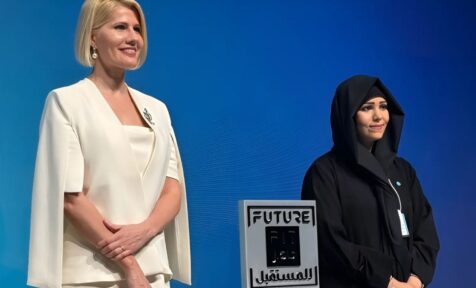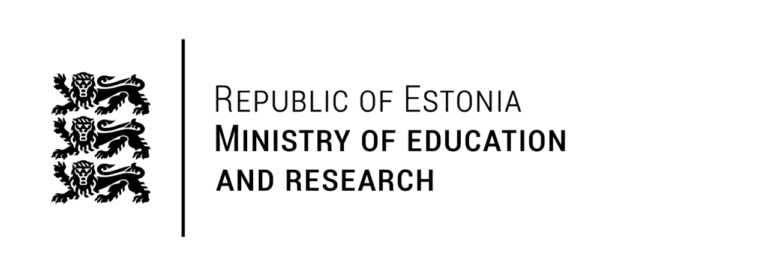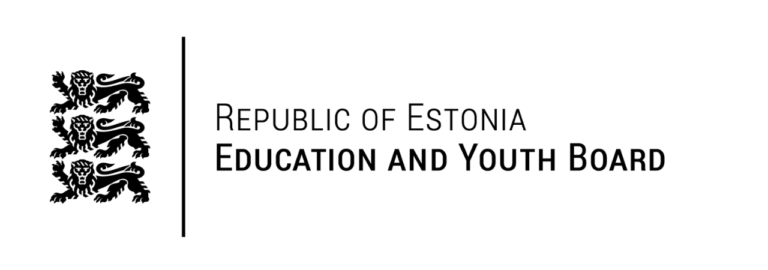Estonia’s Minister of Education and Research, Kristina Kallas, recently sat down with e-Estonia to discuss the nation’s educational landscape. The conversation delved into the key factors behind Estonia’s educational success, digitalisation’s role, and the sector’s future goals. The interview offers insights into how Estonia maintains its global competitiveness in education while balancing traditional teaching methods with technological innovation.
This article by Blessing Oyetunde was originally published on e-Estonia website.
Estonia has made significant progress in terms of student achievement and global competitiveness in education. What are the key factors that have contributed to this success? What lessons can other countries learn from Estonia’s experience?
Estonia’s success combines several different actors: history and mindset, accessibility, curricula, and teachers.
Historically, education has been highly valued in Estonian society. Everyone believes that one should have as good an education as possible. I would even say that we are an education nation – a nation that strongly believes in the value and need for education to succeed in life and be self-fulfilled.
Another major factor to our success is most definitely the equitable and comprehensive school system. Every child must have universal access to quality education. In Estonia’s case, this means free school lunches and textbooks, free education, schools close to home and high standards for teachers.
Our teachers are highly educated and eager to learn and develop their skills, competencies and knowledge while enjoying very wide autonomy in teaching. We believe that the key to success is providing schools and teachers with a framework set of skills, competencies, and learning outcomes but giving them freedom in deciding how to reach these outcomes.
How is Estonia leveraging digitalisation to maintain its global leadership in education? Particularly regarding PISA rankings and overall educational excellence. Also, how does Estonia’s education system adapt its curriculum to equip students with the skills needed for a dynamic, technology-driven economy?
First, we fully trust our schools’ judgment of what is best for them. Several key tools covering our school network are, in fact, offered by private providers, chosen autonomously by the schools themselves.
On the state level, specific attention to the development of students’ digital competencies has been a priority since 2011. That year, digital competence was first included in the national curricula as one of the general competencies that must be acquired by graduating. This way, we can help learners familiarise themselves with digital tools available in the learning process, but we also keep in mind the broader impact. In a fully digitalised world, digital competencies are crucial for self-fulfilment, contributing to career goals, learning, leisure, and, most importantly, social inclusion.
Since 2014, we have had a lifelong learning strategy that also includes a digital transformation programme. The idea is to help develop the digital competencies of both the teachers and the students. IT training courses and instructional materials helped to integrate digital technology into the learning process to develop digital competence.
The success of the digital transformation of the Estonian education system relies on thorough professional development and training of teachers and educational technologists.
In addition to teaching knowledge and skills in the digital field, Estonian education widely uses numerous smart solutions. These include digital databases, digital textbooks, e-learning materials, digital class diaries, and digital assessments, as well as various applications and programs.
These innovative tools provide an easy way for parents, teachers, and children to collaborate and organise all the information necessary for teaching and learning.
How does the education system balance traditional teaching methods and embracing innovative technologies in promoting digital literacy and skills? What have been some challenges and successes in this regard?
Where we are today is the result of the work of several decades ever since the restoration of our nation’s independence. On this continuous journey, we must keep in mind that digitalisation is never a goal on its own. There is no use for technology just for the sake of digitalising education. Every decision to move from traditional to digital tools must be meaningful. It should simplify and support the learning process. Access to quality education is vital for all learners, regardless of background. These tools should enrich learning opportunities and improve access, not hinder them.
The importance of mental health and socio -emotional skills is recognised in modern education. How does Estonia’s education system address these aspects within and beyond the school environment?
Every spring, we organise national satisfaction surveys to diversify the feedback we receive about the quality of teaching and educational work and create opportunities for systematic monitoring of the well-being and livelihood of different target groups in the educational institution.
This data helps the schools and the Ministry to be aware of the situation and take necessary action to support the teachers and students.
Ensuring equitable access to digital education tools is vital. How does Estonia address disparities in digital literacy and educational opportunities among students, promoting social equity and inclusion?
With our whole school network being covered with stable access to the internet as a first step taken several decades ago, today, many tools are an inseparable part of the average school day. E-diaries for sharing homework and feedback between the school and the home; textbooks and learning resources moving online; or online admission systems: for many, this is how the school has always been. The speedy and smooth transition to distance learning during COVID-19 showed us that we are on the right path but also highlighted the bottlenecks we have quickly been able to draw our attention to ensure continuous access to quality education for all.
Looking ahead, could you outline the Ministry’s short and long-term goals for the education sector and how these align with broader societal aspirations?
The most ambitious short-term goal is the transition to Estonian language education by 2030. The society, including myself, has been ready for this for a long time. Having been raised in a bilingual family, I think this division in our education system has been a huge problem. PISA results have also highlighted the need for establishing equal access to quality education. Estonia is a small country – we do not have the resources to keep two equally good education systems in both Estonian and Russian.
Secondly, we are looking for monetary optimisation in education because our population is declining, and thus fewer school buildings are needed. We have been demolishing old, large school buildings and have replaced them with new, contemporary, more efficient, and suitable buildings that help us to save money while improving the learning environment. It is expensive to build new buildings, but we have a long-term goal: spending more wisely to invest more money in personnel.
Thirdly, raising the compulsory school age from 17 to 18 and re-establishing the vocational education sector. I believe vocational education would be much more popular if the variety of programs were greater. In the coming years, this will be another big goal for the Ministry – to make vocational education more popular by increasing the selection of specialities.
